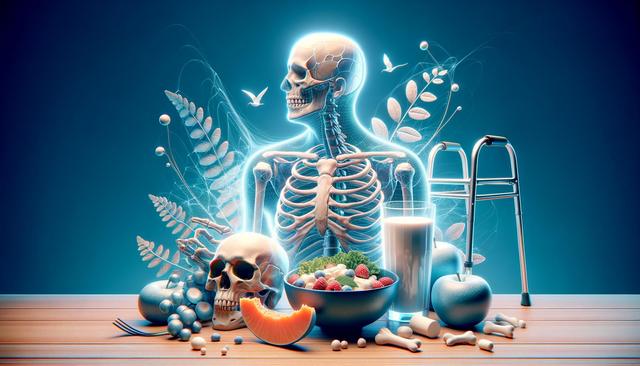Understanding Bone Loss with Age
Bone density naturally decreases as we grow older, primarily due to hormonal changes and reduced physical activity. This decline begins gradually after the age of 30 but becomes more pronounced in the senior years, especially for women post-menopause. Reduced bone density increases the risk of fractures, especially in the hips, spine, and wrists. Understanding how and why bones weaken over time can help seniors take proactive steps to maintain skeletal health and avoid injury.
The aging process affects the balance between bone resorption (breakdown) and bone formation. In youth, the body produces new bone faster than it breaks down old bone. However, in older adults, this balance shifts, leading to a net loss of bone mass. Some key factors that influence bone health in seniors include:
- Decreased calcium and vitamin D absorption
- Lower levels of physical activity
- Hormonal changes, particularly lower estrogen and testosterone
- Chronic conditions such as rheumatoid arthritis or thyroid disorders
By recognizing these risk factors early, seniors and caregivers can work together to create a lifestyle that supports lifelong bone strength.
Nutrition for Stronger Bones
Proper nutrition plays a central role in preserving bone health. A balanced diet rich in bone-supporting nutrients can help slow down bone loss and even improve bone density in some cases. Calcium and vitamin D are the most well-known nutrients for bone health, but several others also contribute to maintaining strong bones.
Key nutrients that support bone health include:
- Calcium: Essential for maintaining bone structure and strength. Found in dairy products, leafy greens, almonds, and fortified foods.
- Vitamin D: Helps the body absorb calcium. It can be obtained from sunlight exposure, fatty fish, and supplements if necessary.
- Magnesium: Supports bone structure and is found in nuts, seeds, whole grains, and legumes.
- Vitamin K: Plays a role in bone metabolism and is abundant in green vegetables like kale and spinach.
- Protein: Necessary for bone repair and renewal. Found in meats, dairy, beans, and legumes.
Seniors should aim to eat a variety of whole foods daily, and in some cases, dietary supplements may be recommended by healthcare providers to meet nutritional needs.
Physical Activity and Bone Strength
Exercise is one of the most effective ways to maintain bone density and reduce the risk of fractures. Weight-bearing and resistance exercises stimulate bone-forming cells and help slow bone loss. In addition to improving bone health, regular physical activity enhances balance, coordination, and strength, reducing the likelihood of falls.
Recommended exercises for seniors include:
- Walking: A simple and effective weight-bearing activity that can be done daily.
- Strength training: Using weights or resistance bands to strengthen muscles and bones.
- Balance exercises: Such as tai chi or yoga, which help prevent falls.
- Flexibility exercises: Stretching helps maintain joint health and mobility.
Before starting any new exercise program, seniors should consult with their healthcare provider to ensure the activities are safe and appropriate for their individual health conditions.
Preventing Falls and Fractures
One of the most serious risks associated with poor bone health in seniors is the increased likelihood of falls and resulting fractures. Preventing falls is critical to maintaining independence and avoiding long recovery periods or complications from injuries.
Strategies to reduce fall risk include:
- Installing grab bars in bathrooms and handrails on stairs
- Ensuring adequate lighting throughout the home
- Removing tripping hazards like loose rugs and clutter
- Wearing supportive, non-slip footwear
- Using assistive devices such as canes or walkers when necessary
Regular vision and hearing checks can also play a significant role in fall prevention. Both senses are essential for maintaining balance and spatial awareness. Additionally, managing medications that may cause dizziness or drowsiness is important in reducing fall risk.
Monitoring and Medical Support
Routine medical oversight is essential for maintaining bone health in older adults. Bone density testing (usually through a DEXA scan) can help detect early signs of osteoporosis or other bone-related conditions. Early diagnosis allows for timely intervention, which can include lifestyle changes, medications, or supplements.
Healthcare providers may recommend:
- Bone density screenings for men and women over 65, or earlier if at high risk
- Regular blood tests to check calcium, vitamin D, and hormone levels
- Medications that slow bone loss or promote bone formation
- Physical therapy to improve mobility and reduce fall risk
Open communication with your healthcare team about any changes in mobility, pain, or previous falls is vital. With proper guidance and support, seniors can take meaningful steps to protect their bones and improve quality of life.
Conclusion: Building a Foundation for Healthy Aging
Maintaining bone health is a crucial aspect of healthy aging. While bone loss is a natural part of getting older, proactive steps in nutrition, exercise, fall prevention, and medical care can significantly reduce the impact. Seniors who focus on these areas are more likely to stay active, independent, and resilient. By making informed choices and working closely with healthcare professionals, older adults can build a strong foundation for a healthier, safer future.


